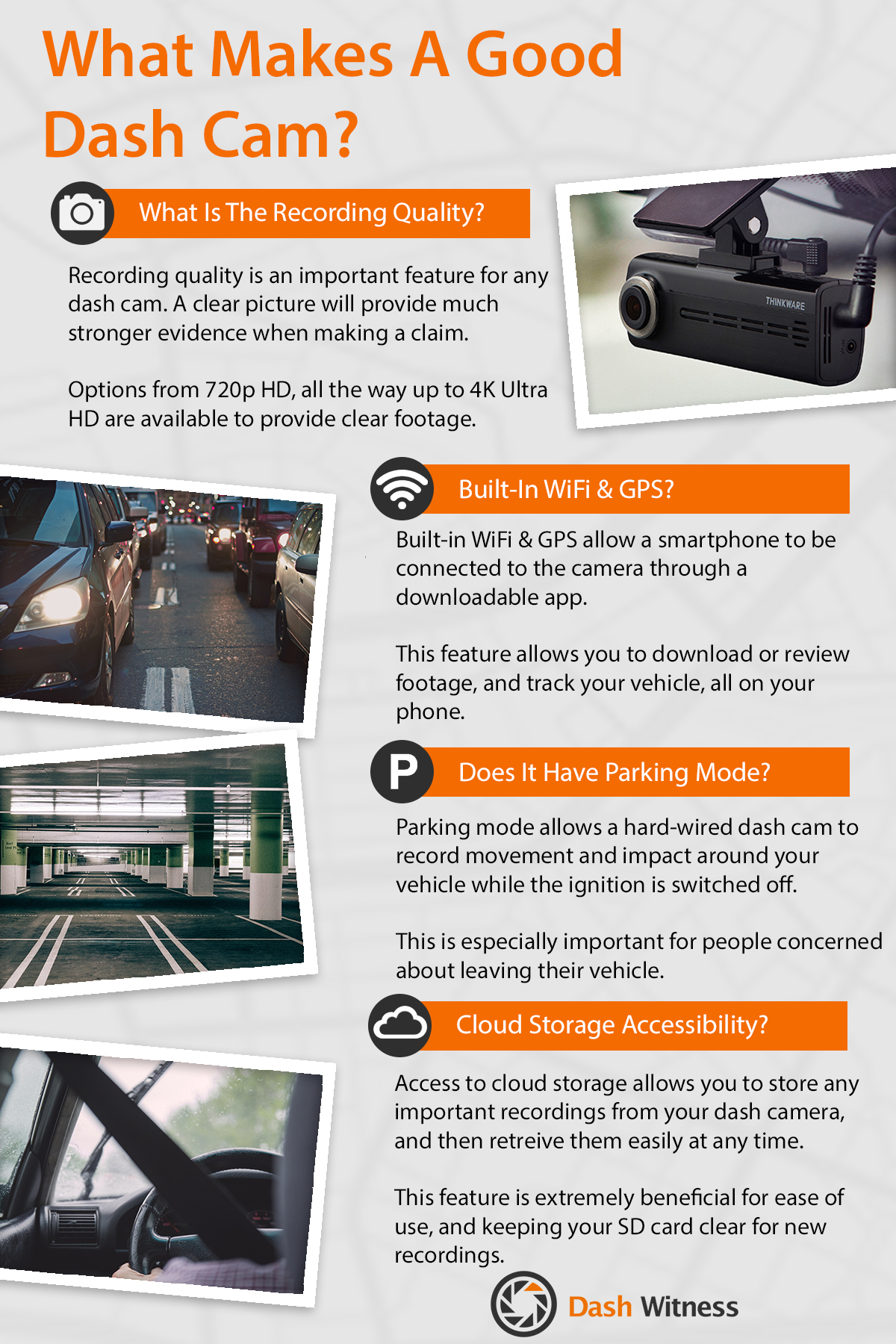When considering the purchase of a dash camera, there are several critical factors to evaluate to ensure you select a model that meets your needs and provides reliable performance. Here’s a detailed breakdown of these factors:
1. Video Quality
Resolution: Look for a dash cam that records at least in 1080p Full HD. Higher resolutions like 1440p or 4K can provide clearer images, which is particularly useful for capturing details such as license plates and road signs. The clarity of the footage is essential for evidence in case of accidents1.
Frame Rate: A higher frame rate (e.g., 30 frames per second or more) results in smoother video playback, which is important for capturing fast-moving incidents2.
Night Vision: Ensure the dash cam has good low-light performance or night vision capabilities to capture clear video during nighttime or low-light conditions3.
2. Field of View (FOV)
The field of view determines how much area the camera can capture. A wider FOV (typically between 120 and 170 degrees) allows for better coverage of the surroundings, including adjacent lanes and potential hazards. However, excessively wide angles may cause distortion at the edges4. For comprehensive coverage, consider models with dual-channel recording that include both front and rear cameras5.
3. Storage Capacity
Dash cams typically use microSD cards for storage. It's crucial to choose a model that supports high-capacity cards (128GB or more) to ensure ample space for continuous recording without frequent overwriting6. Loop recording functionality allows the camera to overwrite older footage automatically when storage is full, but having sufficient capacity helps prevent losing important recordings7.
4. Build Quality and Durability
Select a dash cam with robust construction that can withstand various weather conditions, especially if you live in areas with extreme temperatures. A durable design ensures longevity and reliability over time8.
5. Mounting Options
Consider how easy it is to install and remove the dash cam from your vehicle. Some models use adhesive mounts while others utilize suction cups; each has its pros and cons regarding stability and ease of removal9. Proper placement is also vital—mounting behind the rearview mirror often provides an unobstructed view while minimizing distractions.
6. Power Supply
Most dash cams draw power from the car's power outlet via a cigarette lighter socket or can be hardwired into the vehicle's electrical system. Some advanced models have built-in batteries or supercapacitors that allow them to operate briefly after the engine is turned off, which is useful for parking mode features10.
7. Additional Features
- G-Sensor: This feature detects sudden impacts and locks footage during collisions to prevent overwriting.
- GPS Functionality: GPS-enabled cameras log speed and location data, which can be helpful in accident investigations.
- Wi-Fi Connectivity: Allows easy transfer of footage to smartphones or computers for quick access.
- Audio Recording: Capturing audio can provide additional context during incidents but may have legal implications depending on local laws1112.
Conclusion
By carefully evaluating these factors—video quality, field of view, storage capacity, build quality, mounting options, power supply considerations, and additional features—you can make an informed decision when purchasing a dash camera that best suits your driving needs.
Authoritative Sources
- Fielding Law Firm - How to Pick a Dash Camera [Fielding Law]↩
- Car and Driver - Best Dash Cams Tested [Car and Driver]↩
- Vantrue - Dashcam Buying Guide [Vantrue]↩
- Hindustan Times - Car Dash Camera Buying Guide [Hindustan Times]↩
- My Auto Loan - Essential Features to Look For [My Auto Loan]↩
- Vantrue - Dashcam Buying Guide [Vantrue]↩
- Car and Driver - Best Dash Cams Tested [Car and Driver]↩
- Hindustan Times - Car Dash Camera Buying Guide [Hindustan Times]↩
- Vantrue - Dashcam Buying Guide [Vantrue]↩
- My Auto Loan - Essential Features to Look For [My Auto Loan]↩
- Fielding Law Firm - How to Pick a Dash Camera [Fielding Law]↩
- Hindustan Times - Car Dash Camera Buying Guide [Hindustan Times]↩

Answer Provided by iAsk.ai – Ask AI.
Sign up for free to save this answer and access it later
Sign up →